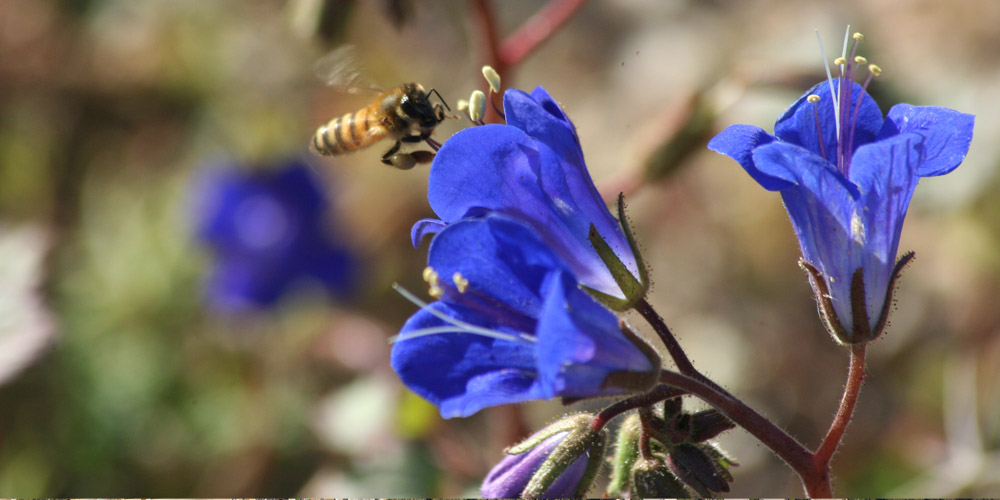Dancing Is Serious Business for Honey Bee, Say Researchers
November 3, 2014
Honey bees are in trouble. They face threats from all sides: disease, parasites, pesticides and loss of habitat. Exacerbating these problems is poor nutrition. To achieve a healthy diet, honey bees use the “waggle dance” to communicate with their nest mates about where to find the tastiest, most nutritious flowers.
Dancing is an essential means of communication for bees, explains Harvey Mudd biology Professor Matina Donaldson-Matasci, who studies how colonies of social insects, such as bees and ants, coordinate group behaviors. Along with co-author and University of Arizona biology Professor Anna Dornhaus, Donaldson-Matasci investigates the goal behind the groove in the paper “Dance Communication Affects Consistency, but Not Breadth, of Resource Use in Pollen-Foraging Honey Bees,” published this month by PLOS ONE, an international, peer-reviewed, open-access, online publication.
Just like humans, honey bees need a variety of foods to achieve a balanced diet, without which they’re more susceptible to all kinds of stress. Humans need to eat daily servings of fruit and vegetables; honey bees need pollen from a variety of flowers to stay healthy.
“Unfortunately, the modern agricultural dependence on monoculture means that bees are often just foraging on one type of flower at a time, and they may go for long periods without any natural forage at all,” says Donaldson-Matasci. “In a more natural setting, a colony might have access to dozens of different kinds of flowers blooming at once. Since each bee typically focuses on one type of flower, the colony needs some way to coordinate which forages on what, so that the group as a whole gets a balanced diet from many different flower types.”
Honey bees perform the waggle dance to tell fellow bees where to find particular kinds of flowers. Because bees dance longer and more enthusiastically for better resources, dancing helps the group direct more bees to the best patches of flowers—but, by concentrating solely on the best ones, they might also limit the variety of their diet. To address these questions, researchers interfered with the bees’ dancing and studied how their pollen diet changed.
“What we found is that the dance actually doesn’t affect the diversity of their daily diet, but it does make it more consistent from day to day. This suggests that the bees are able to use the dance to help focus on particularly good flower patches day after day, without compromising the diversity they need within each day,” says Donaldson-Matasci.
Donaldson-Matasci, who runs her Bee Lab at Harvey Mudd with undergraduate researchers, uses a combination of field experiments with honey bees, laboratory experiments with ants, mathematical models and computer simulations to explore how different types of communication systems are suited to different types of environments and social structures.
Visit the Donaldson-Matasci lab blog.
